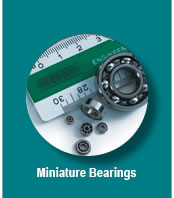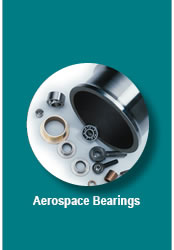Most people are
shocked to find out the length of standard bearing lead times. Some of
the shortest real manufacturing lead times in the industry are just
under 2 months. The average bearing manufacturing lead time is around
18 weeks, yet it only takes 11 days to assemble a Boeing 737.
Though factories are experiencing lower demand for
some bearings now, a number of quotes that came through our office in
early 2008 had lead times longer than 120 weeks. Just what, you may
wonder, can take the major bearing manufacturers so long to make a
bearing.
There are a number of reasons for long bearing lead
times, but the main ones can be summarized by four primary factors:
- Raw material availability
Most bearings are made from standard materials
like 52100 steel or 440C stainless, but components are machined from
specific bar, tube or forged shapes that have to be procured for
specific production runs. There are also many bearings that contain more
exotic raw materials like beryllium or stellite that have long lead
times themselves.
- Variety in components and
production processes
Because each bearing is made up of many components
such as inner races, outer races, balls, retainers, enclosures and
lubricants, there are lead times associated with each component's
processing. Very little can be done in bearing assembly until all
component processing is completed.
- Capacity and long term demand
This is the single largest reason for the
extremely long lead times on some bearings. There are few truly
domestic manufacturers left in the United States. With demand still
high for some aircraft and DFAR's compliant parts there is limited
capacity for the production of these highly specialized items. There
are also extremely high costs associated with increasing the existing
capacity, meaning there is very little room to adjust to large spikes
in demand like those experienced from 2006-2008.
- Existing backlogs
Backlogs have been falling during the economic
downturn, so this has been one lead time driver that's recently eased.
While bearing lead times are still long, some parts can be purchased at
60% of the lead times quoted only 1 year ago, because of currently
light backlogs at many factories.
Despite the fact that most lead times have fallen
over the past year, bearing lead times still remain long compared to
many other types of components. If your product or service
relies on bearings, the constraints and market forces affecting lead
times over the next 2 to 24 months can have a profound effect on the
level of service you may experience.
The only assurance many companies have against
stock-outs on vital components is putting inventory on the shelf.
However, in today's economy, the prospect of excess inventory is
challenging or nearly impossible to deal with for many companies. If
you
are experiencing these difficulties, your next turn
might be to a distributor who knows the industry and importance of your
bearing components.
If you have questions about a specific
issue related to your bearing requirements or lead times, contact NPB
for a requirements evaluation.
Manufacturer Lead Time Comparison 2008 to
2009
Some recently quoted domestic lead times (non
product specific) from major bearing manufacturers compared to lead
times from May 2008:
| Major Domestic Manufacturer |
LT May 2009* |
LT May 2008* |
| Aurora Bearing Company |
18-20 weeks |
24-26 weeks |
| NHBB Astro Division |
16-18 weeks |
26-28 weeks |
| NHBB HiTech Division |
24-30 weeks |
50-60 weeks |
| NHBB Precision Division |
22-24 weeks |
26-28 weeks |
| RBC Aircraft Products, Inc. |
18-24 weeks |
30 weeks |
| RBC Heim Bearings Corp |
18 weeks |
22 weeks |
| RBC Industrial Tectonics Bearings
Corp |
30 weeks |
30 weeks |
| Timken Aerospace |
18-64 weeks |
52-120 weeks |
| Timken MPB |
12-18 weeks |
16-26 weeks |
| *Representative lead times seen on
quotes to NPB on a variety of parts. |
Tom Koetje
Manager of NPB Products
|



















